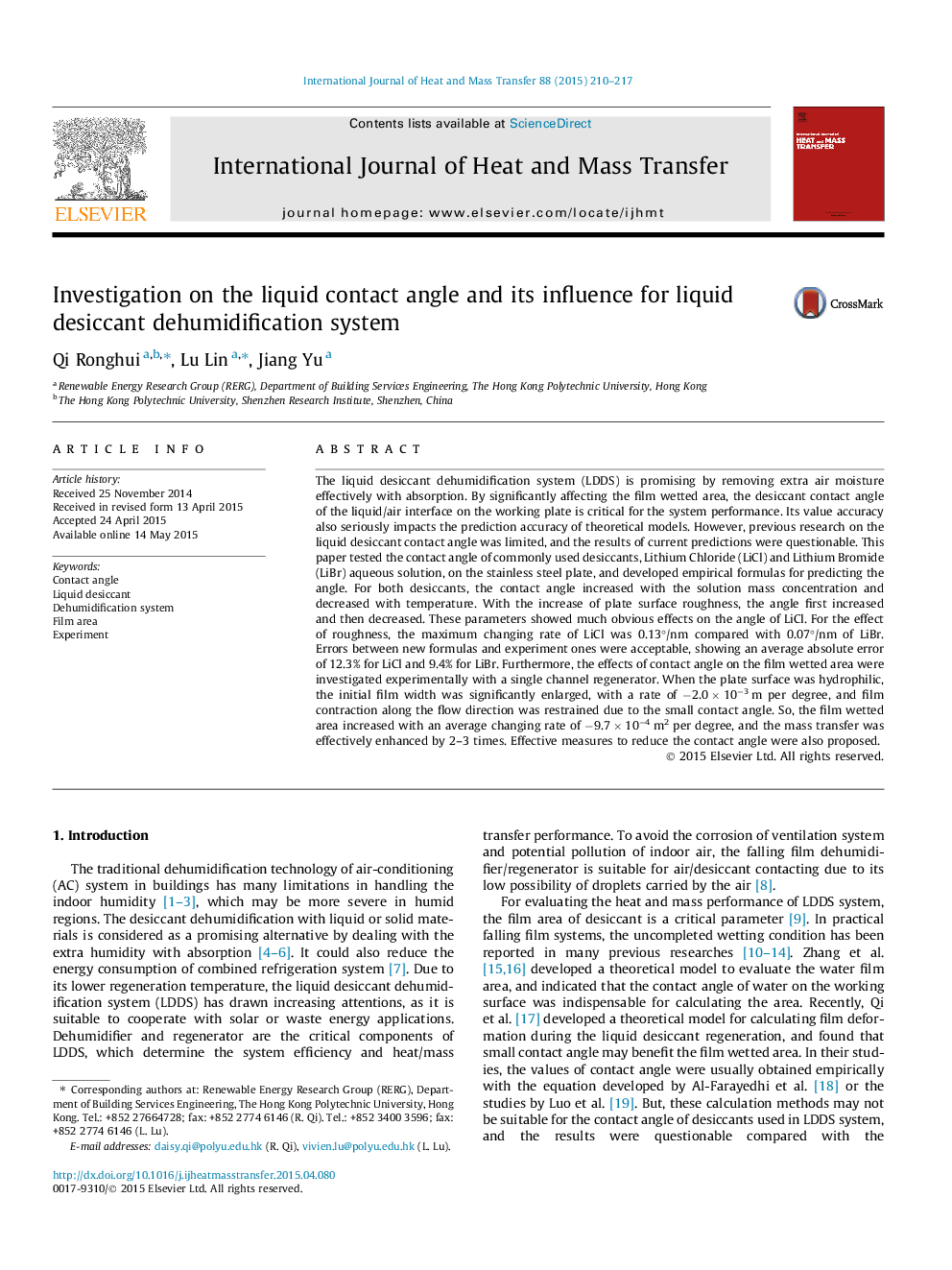| کد مقاله | کد نشریه | سال انتشار | مقاله انگلیسی | نسخه تمام متن |
|---|---|---|---|---|
| 657016 | 1458054 | 2015 | 8 صفحه PDF | دانلود رایگان |
عنوان انگلیسی مقاله ISI
Investigation on the liquid contact angle and its influence for liquid desiccant dehumidification system
ترجمه فارسی عنوان
بررسی زاویه تماس مایع و نفوذ آن برای سیستم تخلیه مایع خشک کن
دانلود مقاله + سفارش ترجمه
دانلود مقاله ISI انگلیسی
رایگان برای ایرانیان
کلمات کلیدی
زاویه تماس، مایع خشک کن، سیستم رطوبت، منطقه فیلم، آزمایشی
موضوعات مرتبط
مهندسی و علوم پایه
مهندسی شیمی
جریان سیال و فرایندهای انتقال
چکیده انگلیسی
The liquid desiccant dehumidification system (LDDS) is promising by removing extra air moisture effectively with absorption. By significantly affecting the film wetted area, the desiccant contact angle of the liquid/air interface on the working plate is critical for the system performance. Its value accuracy also seriously impacts the prediction accuracy of theoretical models. However, previous research on the liquid desiccant contact angle was limited, and the results of current predictions were questionable. This paper tested the contact angle of commonly used desiccants, Lithium Chloride (LiCl) and Lithium Bromide (LiBr) aqueous solution, on the stainless steel plate, and developed empirical formulas for predicting the angle. For both desiccants, the contact angle increased with the solution mass concentration and decreased with temperature. With the increase of plate surface roughness, the angle first increased and then decreased. These parameters showed much obvious effects on the angle of LiCl. For the effect of roughness, the maximum changing rate of LiCl was 0.13°/nm compared with 0.07°/nm of LiBr. Errors between new formulas and experiment ones were acceptable, showing an average absolute error of 12.3% for LiCl and 9.4% for LiBr. Furthermore, the effects of contact angle on the film wetted area were investigated experimentally with a single channel regenerator. When the plate surface was hydrophilic, the initial film width was significantly enlarged, with a rate of â2.0 Ã 10â3 m per degree, and film contraction along the flow direction was restrained due to the small contact angle. So, the film wetted area increased with an average changing rate of â9.7 Ã 10â4 m2 per degree, and the mass transfer was effectively enhanced by 2-3 times. Effective measures to reduce the contact angle were also proposed.
ناشر
Database: Elsevier - ScienceDirect (ساینس دایرکت)
Journal: International Journal of Heat and Mass Transfer - Volume 88, September 2015, Pages 210-217
Journal: International Journal of Heat and Mass Transfer - Volume 88, September 2015, Pages 210-217
نویسندگان
Qi Ronghui, Lu Lin, Jiang Yu,
